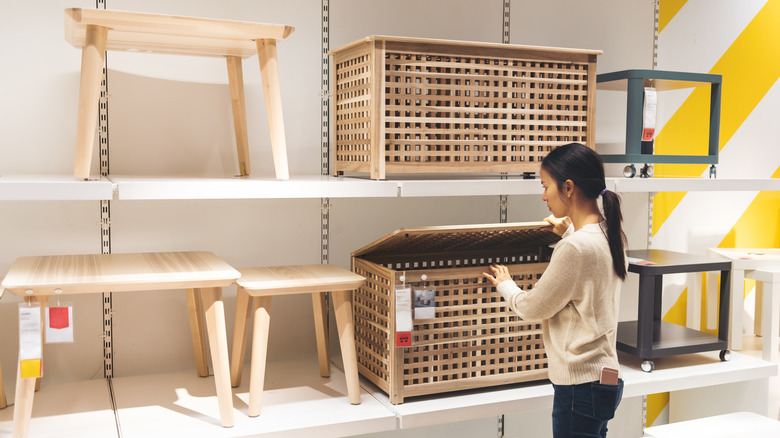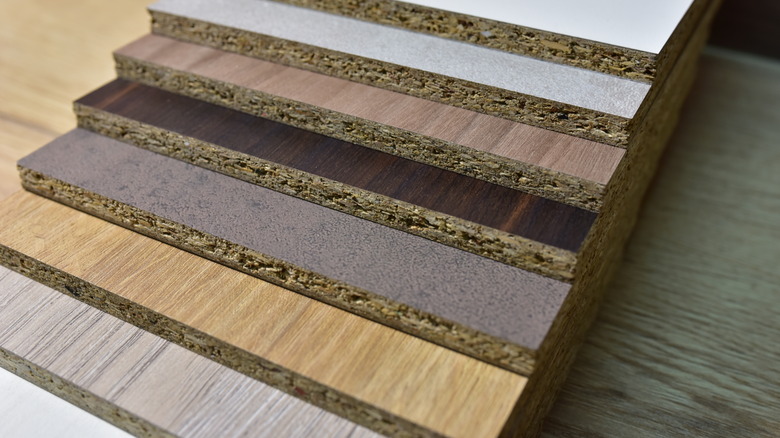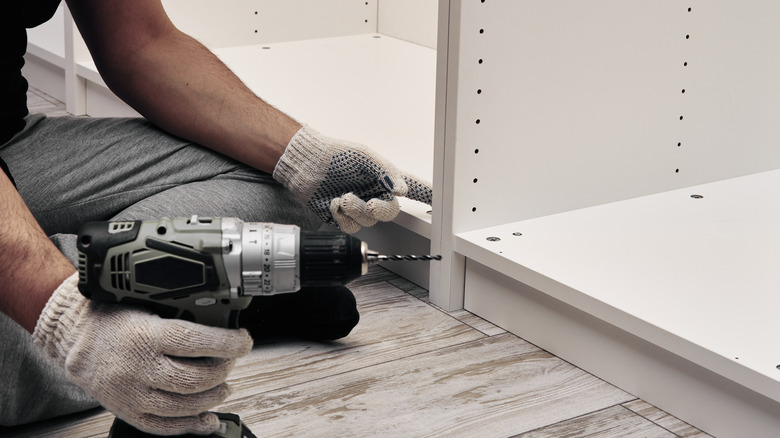Tips For Ensuring You're Buying Furniture That's Built To Last
You've likely already heard of fast fashion, but have you heard of fast furniture? Like fast fashion, fast furniture is low-priced and cheaply made, designed only to last a handful of years, via Design Excellence. After the piece inevitably breaks, splits, or discolors due to its poor construction, customers head into the store to pick up a new, trendy piece to replace it. This furniture doesn't cost much to produce and has a quicker turnaround rate than something high quality, so it's a standard business model because it maximizes profit, even if stores charge low prices.
For some people, this low-priced furniture is the only financially viable option for new pieces, but if you have the choice, CEO and founder of The Table Company, Ken Phillips, says it's best to avoid it. "Potential buyers [of fast furniture] should think carefully about their budget and ask whether they want quality furniture or are simply filling a gap," he says. "If the furniture is going to see frequent use or be the centerpiece of a room or space, it's usually best to invest in quality pieces," via Realtor.com. Correctly discerning which pieces are fast furniture versus something that's just a good deal can be difficult. Still, there are some specific characteristics to look out for to help you avoid buying something low-quality.
Look to the materials
The biggest factor in determining furniture quality is, of course, what it's made of. When it comes to metal or plastic, there's not much difference between high quality and low-quality — just make sure you're picking something that feels thick and sturdy to guarantee it holds up. However, there's a lot of variety in the materials when it comes to wood or wood-looking furniture.
According to The Chipped Maus, wood furniture is typically made of one of three materials: laminate, veneer, or solid wood. Laminate is the flimsiest, and most big box stores like Target or IKEA use it. It's a particle board base with a coating on top that usually mimics the look of wood. This is best to avoid if you want something that won't crack under heavy weight. A veneer is slightly more durable, though less common. It's the same particle board base, but it has a thin layer of real wood on top to create a realistic finish. Obviously, solid wood is the best bet, so if you can revitalize a piece of thrifted furniture for a reduced price, you can get the best of both worlds.
Analyze the construction
Once you've determined that a piece of furniture is made of quality materials, look at the construction. As a general rule of thumb, furniture that comes in pieces in a box is a no-go. While it may seem difficult thumbing through a nearly incomprehensible instruction manual, fast furniture is designed to be easily assembled, but not necessarily sturdily. Instead, look for pieces that come fully built and ready to use.
Some more telltale signs that a furniture piece is well-made take a bit more of a hands-on approach. "Solid hardwood furniture with fully assembled, glued joinery, upgraded soft-close drawer rails, and door hinges are the hallmark features of furniture that can be expected to last," says HGTV host Rachel Taylor. "Old-growth hardwoods like oak, maple, and walnut are top choices for functional decor that can survive moves, seasonal heat and humidity changes, and heavy usage for years to come," via Realtor.com. While we can't all shell out thousands of dollars for high-end pieces throughout our home, avoiding fast furniture can be helpful to both the environment and your wallet in the long run.


